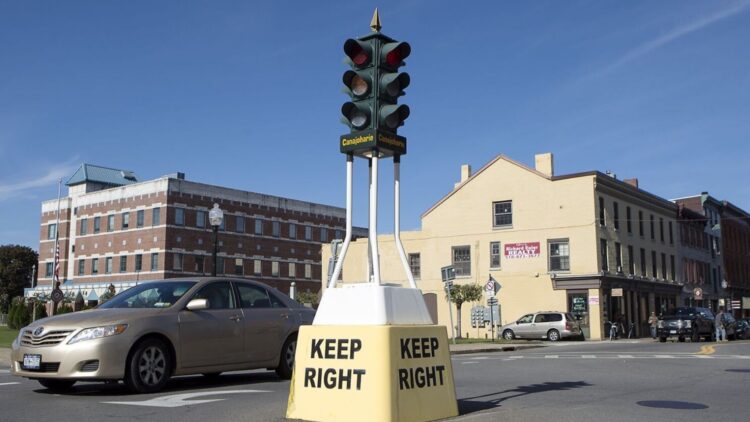Traffic lights in the United States have not always had the layout and operation they have today. Before the incorporation of electric lights into traffic signals, traffic was regulated by police officers physically at intersections. This method became unviable as traffic flow increased, so around 1912 the first electric traffic light was installed in America. Initially, it only had a green and a red light, but later a yellow warning signal was added.
These systems, called dummy lights, began to be replaced by increasingly modern models, although in certain areas of New York, some of these traffic relics can still be found. The presence of these historic signals poses a safety risk for drivers, as they can cause confusion and collisions. However, local communities want to keep these lights as historical monuments, and efforts have been made to highlight them so that they are more visible and do not pose a safety threat.
Origin of traffic lights in the United States
The first traffic light that included the three colors we know today was installed in the United States in the 1930s. The green color was identified as go, yellow as slow down, and red as stop. However, the origin of the traffic light dates back several years earlier, around 1912. Initially, traffic was regulated by police officers who were stationed at intersections. This became unfeasible as traffic increased, and there arose the need to create another method to control traffic flow.
It was then that a simple green and red light system on a post was installed for the first time: the first traffic light. It was in the 1920s that the yellow or amber light was added, giving rise to the system of lights we know today. The use of these lights spread to more cities, and they were mounted on a pedestal in the center of intersections. They were called dummy lights because they replaced the absent officers.
New York keeps its old traffic lights
Changes in road safety have also affected traffic lights, which are now either suspended in the air or mounted to avoid being just another obstacle on the road. While other cities have already removed the old models, some, like Beacon and Croton-on-Hudson in the Hudson Valley, still keep theirs. In fact, residents refuse to get rid of them because they consider them symbols of their historical character and believe they should be preserved for future generations. The same happens in Canajoharie in the Mohawk Valley, where they were removed due to causing collisions and needing repairs. However, they were reinstalled in May of this year because of their historical character and value to the residents.
Threat to road safety
The presence of these old traffic lights is a source of confusion for drivers who are not used to seeing them. Their presence increases the risk of collisions, not only because they are unexpected, but also because they are less visible than modern traffic lights and have an older, non-standard design. However, pressure from local communities has led authorities not to remove them despite the potential risk.
In response, they have decided to add safety measures such as reflective paint, higher bases, and warning signs. It is true that it can cause confusion, but within the ambiguity, it maintains a color code and operation similar to modern traffic lights, so the driver can understand the message, unlike what happens with the blue traffic lights that are still preserved in Japan.
